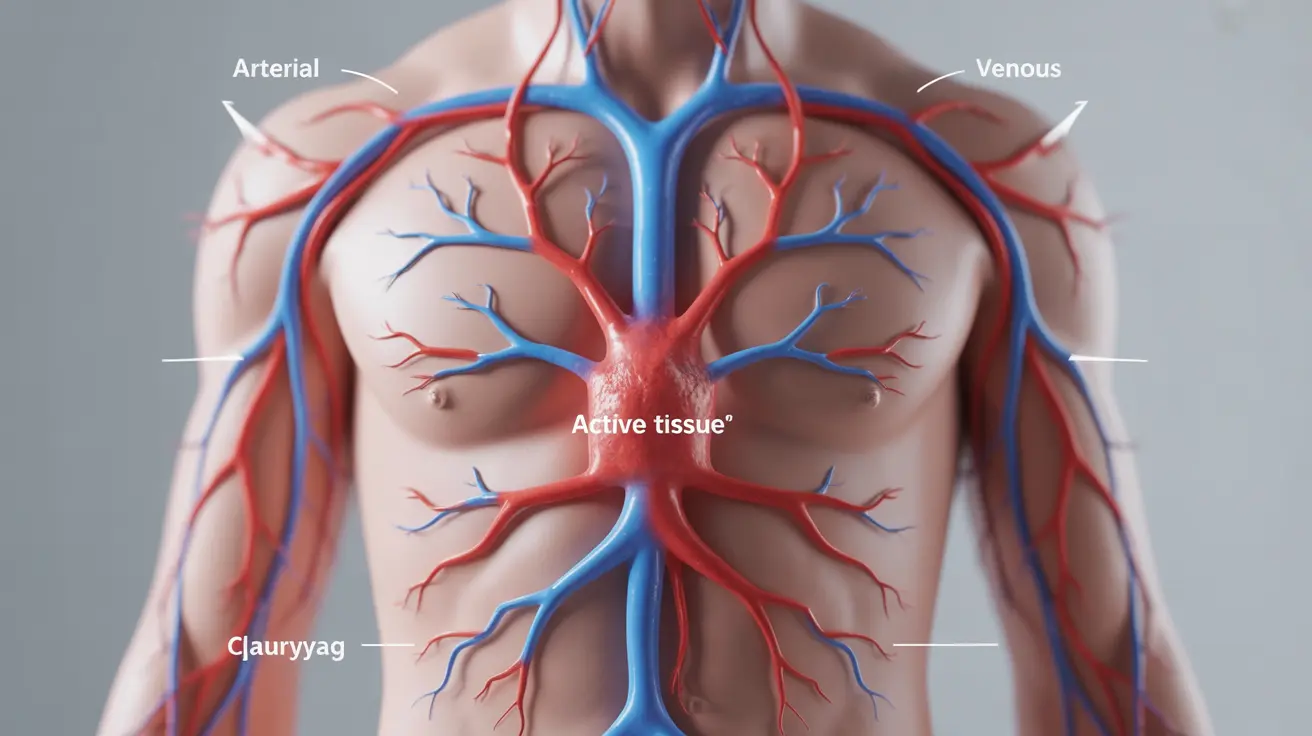Vasodilation is a natural process where blood vessels widen, allowing for increased blood flow throughout the body. This crucial physiological mechanism plays a vital role in maintaining cardiovascular health, regulating blood pressure, and supporting overall wellness. Understanding how vasodilation works and its effects on your body can help you make informed decisions about your health.
From exercise and dietary choices to medical treatments, various factors can influence vasodilation. This comprehensive guide explores the symptoms, benefits, and management strategies associated with this important bodily function.
The Mechanism of Vasodilation and Its Effects
When blood vessels dilate, they create more space for blood to flow, which can lead to several physiological changes. The widening of blood vessels reduces resistance to blood flow, typically resulting in lower blood pressure and improved circulation to various tissues and organs.
This process is controlled by both neural signals and chemical mediators, allowing your body to respond to different situations and maintain optimal blood flow where needed.
Common Symptoms of Vasodilation
While vasodilation is generally beneficial, excessive dilation can cause noticeable symptoms:
- Flushing or redness of the skin
- Warm sensation in affected areas
- Temporary drop in blood pressure
- Mild dizziness or lightheadedness
- Rapid heartbeat in some cases
Cardiovascular Benefits and Considerations
Proper vasodilation offers several cardiovascular advantages:
- Improved blood flow to vital organs
- Better oxygen delivery to tissues
- Enhanced nutrient distribution
- Reduced strain on the heart
- More efficient temperature regulation
However, it's important to maintain a balance, as excessive vasodilation can sometimes lead to unwanted effects on blood pressure and circulation.
Dietary Influences on Vasodilation
Certain foods and nutrients can naturally promote healthy vasodilation:
- Nitrate-rich vegetables (beetroot, leafy greens)
- Foods high in flavonoids (berries, dark chocolate)
- L-arginine sources (nuts, seeds, legumes)
- Omega-3 fatty acids (fatty fish)
- Potassium-rich foods (bananas, avocados)
Exercise and Vasodilation
Physical activity naturally triggers vasodilation to meet increased oxygen demands. Regular exercise can improve your body's ability to regulate blood flow and enhance overall cardiovascular function. Both aerobic and resistance training contribute to better vascular health and more efficient vasodilation responses.
Medical Applications and Treatments
Healthcare providers may use vasodilation-inducing medications for various conditions:
- Hypertension management
- Angina treatment
- Raynaud's phenomenon
- Peripheral vascular disease
- Erectile dysfunction
Frequently Asked Questions
What are the symptoms of excessive vasodilation, and how can they be managed?
Excessive vasodilation symptoms include flushing, dizziness, and temporary drops in blood pressure. Management strategies include staying hydrated, avoiding trigger situations, and gradually changing positions to prevent sudden blood pressure changes. In some cases, medical intervention may be necessary.
How does vasodilation affect blood pressure, and what are its benefits and risks for cardiovascular health?
Vasodilation typically lowers blood pressure by reducing resistance in blood vessels. While this can benefit those with hypertension, excessive dilation might cause unwanted drops in blood pressure. The primary benefits include improved circulation and reduced cardiac workload.
What foods or dietary changes can help promote healthy vasodilation?
Foods rich in nitrates, flavonoids, and L-arginine can promote healthy vasodilation. This includes beetroot, dark leafy greens, berries, dark chocolate, nuts, and seeds. Maintaining adequate hydration also supports proper vessel function.
How does physical activity impact vasodilation, and what are the benefits for overall health?
Exercise naturally triggers vasodilation to meet increased oxygen demands. Regular physical activity improves your body's vasodilation response, enhances cardiovascular health, and promotes better blood flow regulation throughout the body.
What medical treatments or medications can induce vasodilation, and when are they used?
Various medications, including calcium channel blockers, nitrates, and ACE inhibitors, can induce vasodilation. These are commonly prescribed for conditions like hypertension, angina, and other cardiovascular issues under medical supervision.




